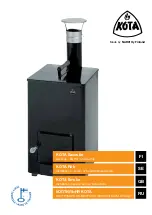
Figure 1. The location of the acoustic axis.
The monitor enclosure has its acoustical
axis midway between the midrange and
treble drivers. This axis should be used
as the listening and measuring axis of the
system. (See Figure 1 and 2).
The typical listening distance varies
between 2 and 3.5 m (6½ and 11½ ft) from
the monitors. The monitor should be aimed
so that the vertical acoustical axes of the
two monitors meet midway between the
standing and seated listening position (1.4
m – 4 ft 7 in from the floor). This allows
the correct frequency response to be
received by a standing or seated person.
The monitors should not be mounted too
high as this increases the required vertical
tilt of the monitor and reduces the optimum
listening area.
The ceiling, side walls and especially the
rear wall should be acoustically absorbent
at low frequencies. The monitor mounting
wall should be acoustically hard and
therefore reflective. The monitor mounting
wall should be angled so that the monitors
are correctly aimed. Great care should be
taken over how the monitor is mounted into
the solid and sturdy wall structure.
Note the following:
A space 50…100 mm (2…4 in) wide can be
left around the monitor enclosure.
Cover the space around the enclosure
with a facing panel, this should be fixed
to the wall. Leave a gap of about 5…10
mm (¼…½ in) between the enclosure and
the panel. Fill this gap with a soft rubber
gasket to allow for possible enclosure
movement. Ensure that the speaker cables
can reach the rear of the enclosure. If a
light (e.g. wooden), but heavily braced,
wall is used, the monitor enclosure should
be mounted on vibration isolators with a
resonant frequency of around 2…8 Hz, to
prevent vibrations from being transmitted
to the wall and impairing the low frequency
performance. The space around the
enclosure should be filled with absorbent
mineral wool or foam plastic. The walls
must be well braced.
For a solid wall (e.g. concrete), the
enclosure may be directly mounted to the
wall without vibration isolators. The space
around the enclosure should be filled with
mineral wool or sand bags.
Discontinuities in the enclosure mounting
wall will cause diffraction, which leads to
>2.0m
390 mm
270 mm
700 mm
383
mm
890
mm
>2.0m
350 mm
660 mm
340
mm
(13
3/8
in)
355 mm
(14 in)
355 mm
(14 in)
180
mm
(7
7/8
in)
180 mm
(7 7/8 in)
180
mm
(7
7/8
in)
Cable gauge
Max. length
2,0 mm
2
(14 AWG)
30 m (100 ft)
3,3 mm
2
(12 AWG)
40 m (130 ft)
5,3 mm
2
(10 AWG)
60 m (200 ft)
Table 1. Recommended cable thicknesses
for different lengths of speaker cable
Figure 2. Monitor enclosure
mounting.
Figure 3. Monitor enclosure mounting
details.
Figure 4. Eliminating discontinuities.
Figure 5. Recess for speaker cable
connectors (front view).


























